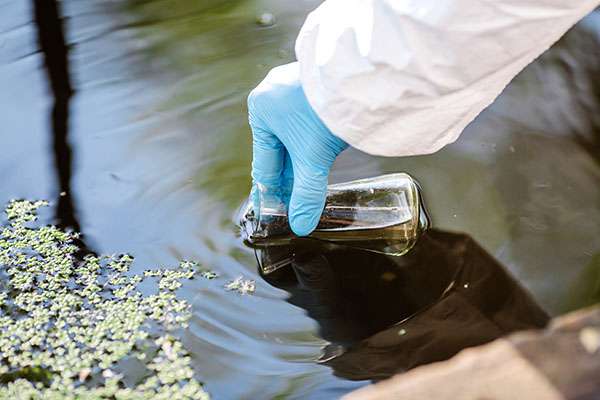 Parler
Parler Gab
Gab
GenX chemicals are now a human health concern
These shorter chain GenX chemicals do not persist as long in the environment, but they are more mobile than the longer chain PFAS and can travel further from contaminated sites and deeper into ground water sources. GenX chemicals are replacing PFAS in manufacturing settings, but their toxicity to humans is just now being documented. According to a new EPA assessment, their toxicity profile doesn’t look much better than traditional PFAS. There is concern over liver damage and liver lesion formation. While these chemicals do not last as long in the environment as traditional “forever chemical” PFAS, they are able to travel further from contaminated sites and pollute water sources that would normally be protected from contamination. GenX chemicals refer to the toxic byproducts that come from processing aid technologies that are used in the manufacture of high-performance fluoropolymers. Hexafluoropropylene oxide (HFPO) dimer acid and its ammonium salt are the major chemicals associated with this technology. The EPA is just beginning to obtain information from manufacturers on which commercial products rely on GenX chemicals as a processing aid. The EPA has made a final assessment on these chemicals in regard to potential human health effects associated with oral exposure. These health effects include damage to the liver, kidneys and immune system of humans. Exposure to Gen X chemicals in drinking water also negatively effects the development of offspring and is associated with various cancers. In the studies, low dose exposure to GenX chemicals caused alterations of cytoplasm and apoptosis and necrosis of liver cells. GenX chemicals notably increased liver enzymes, increased liver weight and even caused a constellation of lesions in the livers of female mice. Furthermore, the chemicals changed lipid and carbohydrate metabolism in pregnant mice, leading to anabolic challenges during early gestation and catabolic challenges in advanced pregnancy. These are just the initial risks studied for oral exposures. The EPA also warns that GenX chemicals are getting in the air from manufacturing sites and causing health issues, but these issues are currently under review. According to a December 27, 2021 EPA ruling, certain municipal water systems must monitor for 29 different PFAS, including GenX chemicals. These PFAS will be monitored during the period beginning January 2023 and ending December 2025, with final results to be reported in 2026. The EPA lists three technologies to help reduce PFAs and GenX chemicals in tap water. These include activated carbon, anion exchange and high-pressure membranes. To learn more about water filtration and protecting your body from PFAS and GenX chemicals, check out WaterFilterLabs.com. Sources include: Expose-News.com EPA.gov EPA.gov [PDF] EPA.gov [PDF] EPA.gov [PDF] WaterFilterLabs.comStudy: HEART ATTACKS declining among older people but INCREASING in young adults
By Laura Harris // Share
Florida Congressman defends Israel’s brutal killing of civilians in Gaza
By News Editors // Share
REVEALED: Justin Trudeau invited Nazi soldier to official Zelensky reception
By News Editors // Share
By News Editors // Share
mRNA vaccines are extremely toxic, Moderna scientists now warn
By Ethan Huff // Share
Governments continue to obscure COVID-19 vaccine data amid rising concerns over excess deaths
By patricklewis // Share
Tech giant Microsoft backs EXTINCTION with its support of carbon capture programs
By ramontomeydw // Share
Germany to resume arms exports to Israel despite repeated ceasefire violations
By isabelle // Share










